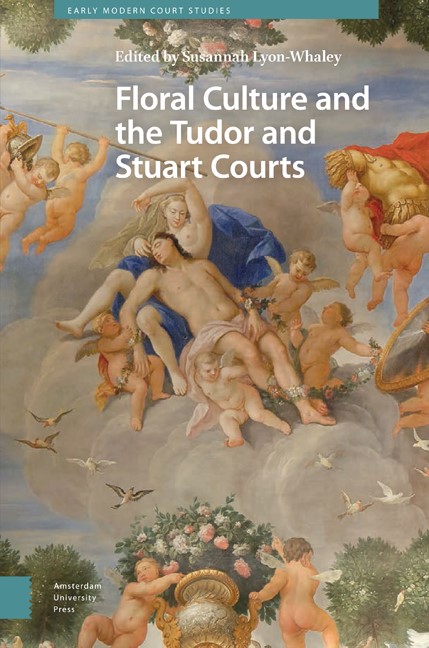1 - The ‘Greater Delight’ : Gardens, Plants, and Flowers and the Tudor and Early Stuart Court
Published online by Cambridge University Press: 16 April 2024
Summary
Abstract
This chapter considers how plants and flowers were displayed in gardens and, briefly, within the house. Sources on flowers include contemporary garden books, plant lists, and biographies of plant collectors and gardeners. Yet, there are almost no detailed descriptions of how flowers were arranged in these gardens, whose forms evolved from the largely medieval appearance of early Tudor gardens to the far more classical configuration of the Elizabethan and later periods. In almost all these gardens the framework of the design—the evergreen hedges and hard landscaping—remained dominant throughout the year with flowers filling the gaps. Within the house, cut flowers from the garden beautified and perfumed the interior and served to complement the plethora of decorative floral motifs.
Keywords: evergreen; landscape; design; hedges; Lord Burghley; plantsmen
Among the manifold creatures of God … that have all in all ages diversly entertained many excellent wits, and drawn them to the contemplation of the divine wisdome, none have provoked mens studies more or satisfied their desires so much as plants have done … for if delight may provoke mens labour, what greater delight is there than to behold the earth apparelled with plants, as with a robe of imbroidered worke, set with orient pearles, and garnished with great diversitie of rare and costly jewels.
‒ John Gerard, 1597Flowers and Plants
The Elizabethan herbalist John Gerard's (c. 1545–1612) description of gardens as dazzling as ‘orient pearles’ and as intricate as embroidered textiles was already a cliche in the late sixteenth century: the poet Nicholas Grimald (1519–1562) had written in a poem, The Garden (1577), about ‘fair flowers that shine so bright … like the orient gems’ and numerous writers would compare interwoven garden designs to needlework. These wonderful images of sparkling floral displays give us no real idea of how flowers were actually displayed within the framework of the Tudor garden. It was this framework—constructed of hard materials (walls and walks, for example) or evergreen plants (in enclosing hedges or intricate patterns within the beds)—that dominated the garden so that its design would be consistent all year.
- Type
- Chapter
- Information
- Floral Culture and the Tudor and Stuart Courts , pp. 47 - 70Publisher: Amsterdam University PressPrint publication year: 2024



